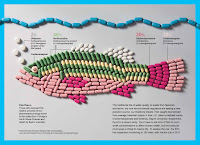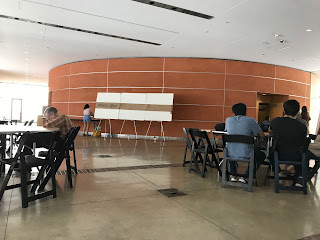Event 1 - What's Next Lecture
As she continued on with her discussion, one interesting question she asked that still weighs on me is why some things are the shapes the they are. For example, why are we as people so obsessed with right angles, yet other organisms such as bees prefer different shapes, such as a hexagon.
While I nor anyone else has any definitive answer as to why this may be, it is certainly a fascinating conversation.
Continuing on, Weintraub provided multiple examples of artists who displayed how our lives have been effected by technology. One of them, Kal Spelletich used robots in different forms, all of which are praying. In her interpretation, the robots were putting their faith (a word often associated with prayer) in technology. During this time, she posed an interesting question which was because we allow robots to do everything in our lives for us already, would we allow them to take part in our most intimate facet of prayer? It is really eye opening to think about how something as personal as prayer can be passed along to a robot should any person desire.
 |
| Spelletich's praying robots |
Finally, the last artist she discussed that caught my attention was Natalie Jeremijenko. She was described by Weintraub as a person who was strongly passionate about the effect pollution has on our world, and how artists may be able to help. One of her examples in particular was that Jeremijenko once pasted flyers of the human digestive system excreting pharmaceutical into the water supply of animals that have no defense. Although bold and maybe offensive to some, was almost certainly effective. And that is a lot of what art is about.
Making a point about the world that many others would be scared to say. It provides a medium for thought, a platform for creation ,and overall, a benefit on the world that could not be measured in any single way.
 |
| A visual representation of the different pharmaceuticals in a fish |
Overall, I found the event extremely thought inducing and helpful not just in my future for this class, but my life as a whole, which is why I would certainly recommend this discussion for any future students.






Comments
Post a Comment